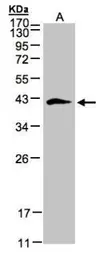Biglycan antibody
Cat. No. GTX102765
Cat. No. GTX102765
-
HostRabbit
-
ClonalityPolyclonal
-
IsotypeIgG
-
ApplicationsWB IHC-P
-
ReactivityHuman

